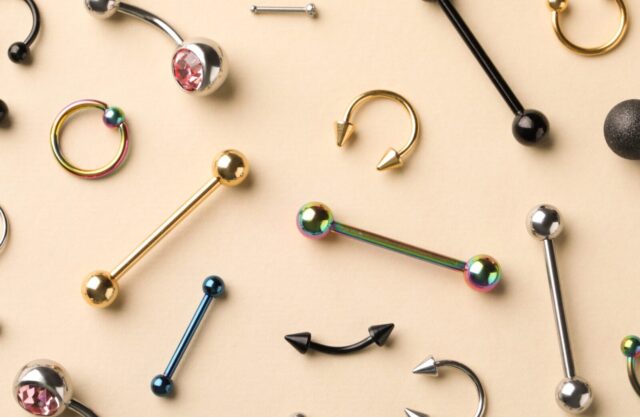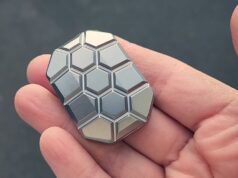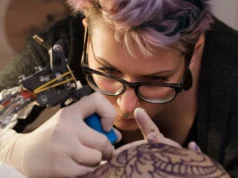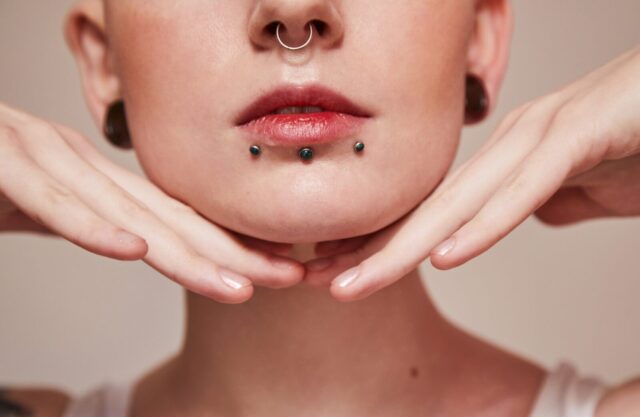
So, are you thinking about getting pierced? Whether it’s your tragus, a nipple, or even your nether regions, piercings can be super stylish. Some people consider getting body piercings as a self-expression strategy, while others simply just want to go with the trend or be influenced by their favorite celebrities.
According to a survey on body piercings, 84% of women and 64% of men had pierced their earlobes, making it the most commonly chosen site for piercings. Even if you’ve had several piercings, you might still get a little nervous about the pain. And it is normal to feel anxious or apprehensive.
Understanding what to expect during and especially after piercing helps you handle it smoothly and calmly. We’ll walk you through the sensation of getting pierced, how long soreness typically lasts, infection risks, and how to nurture your fresh bling back to health.
The Actual Piercing Sensation: What To Expect?
When that needle first punctures your skin, it will sting! But the thing is, it’s seriously over so fast, a matter of seconds. Even if you’re a total softie when it comes to pain, you can surely handle it.
Meanwhile, the degree to which your piercing hurts does vary based on the location. Earlobes and nostrils are way less sensitive than nipples and genitals, which might explain why they’re the most pierced locations. Still, even the most intense piercing pain can only last briefly. You’ll probably feel your eyes water as that needle pushes through the skin.
Thankfully, the jewelry insertion part goes quicker than you’d think, and your endorphins kick in fast, dulling that piercing throb. So, a piece of advice? Take slow, steady breaths during the procedure and stay calm while the piercer works swiftly. It also helps if you choose a piece of body jewelry from Bodyartforms or other reputable body piercing stores where you trust the quality of their products.
Inflammation And Pain Post-Piercing Procedure
Once the jewelry is placed in your piercing, you will likely feel some inflammation and throbbing. After all, it’s your body’s normal reaction to trauma. Moreover, inserting a new foreign object could cause swelling. The area around the piercing can look red, swollen, and bruised-like during initial healing and for the first few days.
You may take an anti-inflammatory like ibuprofen to ease piercing soreness and swelling. You can alternate hot and cold compresses, too. Resist touching or disturbing the newly pierced area, even though it can be tempting sometimes. Be extra gentle with the new bling until the inflammation calms and dissipates. Once those first painful days pass, discomfort gradually eases up, and it’ll eventually get better.
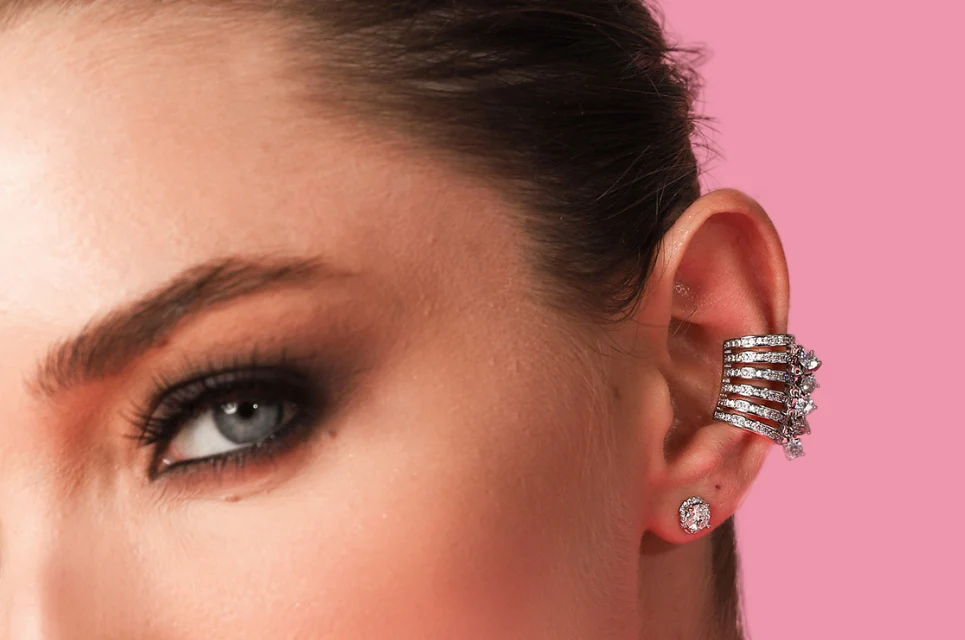
Will There Be A Risk Of Infection?
Infections aren’t common and likely if you care for the piercing properly. Still, it’s essential to understand the infection risks and symptoms so you can catch problems early on.
As you may already know, piercings can create open wounds that are susceptible to germs entering and spreading. This is because bacteria thrive on damp and damaged tissues, such as those found in fresh piercings. Normally, the body’s immune system is able to fend off harmful bacteria before they can multiply and cause problems. However, there may be instances where surrounding microbes are able to infiltrate the body faster than the immune system can react.
Warning signs of infection may include worsening pain, intense redness, and warm skin around the piercing site. You might also observe pus crusted on the jewelry or oozing from the hole. Swelling can worsen, too, and even spread outward from the area. And if bacteria enter the bloodstream, you may feel ill with fever and chills.
The moment you notice or feel infection symptoms don’t delay. Call your piercer or doctor as soon as possible so they can immediately start you on antibiotics. The last thing you’d want is to have a case of sepsis! So, stick to the aftercare rules, and your odds of having an infection will be extremely low.
Caring For A Healing Piercing
The number one piercing commandment to remember is to keep the pierced area clean while it heals. Usually, your piercer will instruct you to spray saline solution directly onto the piercing two to three times daily. The fluid won’t sting but thoroughly flushes the gunk out so your skin can knit back together.
Another essential step to take is moisturizing the skin around the piercing. Apply a gentle, fragrance-free cream often to prevent flaky skin from tearing the fragile tissue.
More importantly, only handle or touch your new piercings as necessary. Your hands or fingers can carry germs and bacteria that might infiltrate your new piercing and cause infection. Even random objects or jewelry other than the new bling are not allowed to touch your piercing to prevent bacteria transfer and jewelry movement.
You must religiously follow your piercer’s care instructions to minimize potential risks. After all, once the outer skin of the pierced area strengthens, you can relax. Until then, protect that piercing site to promote continuous healing.
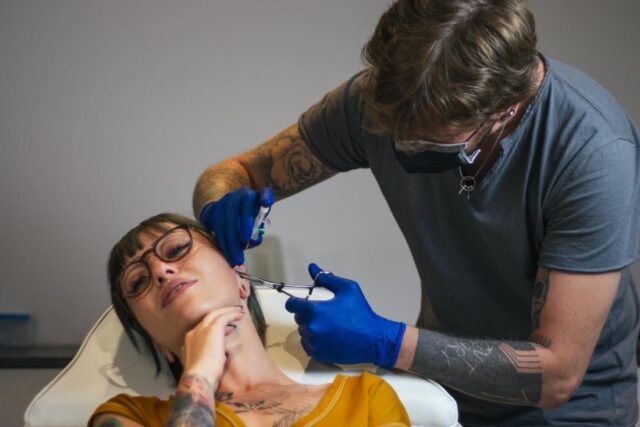
Pain And Healing Duration
Different locations of your piercings will have different levels of pain and healing duration.
Earlobes, for instance, are the least painful to pierce and quickest to mend. The pain scale is likely between 2 and 3, and the healed piercing will fully heal within 4 to 6 weeks.
Meanwhile, cartilage piercings like tragus or helix can heal for a few months as the inner structure takes time to mend itself.
In contrast, oral piercings like lip, tongue, or Monroe piercings heal remarkably fast, though, thanks to the continuous exposure to saliva. They generally stop aching within a week or two. However, eating, chewing, and talking will be uncomfortable and may take time to adjust.
Nipple and genital piercings hurt intensely, but the pain can stabilize and heal within 6 to 8 weeks. Ideally, you’ll be recommended to take things slow and avoid too much friction to these delicate areas while the skin regenerates.
Overall, regardless of your piercing’s placement, you should stay vigilant with aftercare as sometimes, even healed piercings can get infected or rejected by your body years later.
The Bottom Line
Understanding the piercing pain scale can give you a clearer and better idea of what to expect during and after the piercing procedure. Remember, pain tolerance is subjective and will differ from person to person. Nevertheless, working with an experienced and reputable piercer is recommended to help you achieve your dream piercing, address your piercing-related concerns, and provide personalized advice. So, go ahead, express yourself, and get that unique piercing you’ve always wanted!

